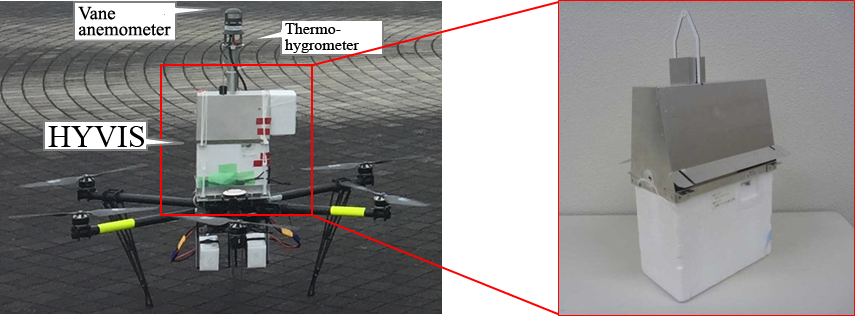On 31 August, a research team led by Program-Specific Associate Professor Kansuke Sasaki of the Meteorological and Hydrological Risk Information Section, Research Division of Atmospheric and Hydrospheric Disasters, Disaster Prevention Research Institute (DPRI), embarked on a project to analyze the mechanisms of fog formation and dissipation using an unmanned aerial vehicle (UAV, or drone). The undertaking is a collaboration with three external partners: Japan Weather Association (Chairman: Hiroki Ishikawa) in Toshima, Tokyo; Yamaguchi University (President: Masaaki Oka) in Yamaguchi; and Meisei Electric Co in Isesaki, Gunma, represented in the project by Koji Shibata, general manager of the weather disaster prevention business division.
The team conducted a preliminary survey on 19 June, and the first series of onsite observations from 31 August through 1 September. Observations were performed both from the ground, similar to traditional fog-analysis projects, and from the sky using a drone, making the efforts "three-dimensional".
Effects of foggy, low-visibility conditions on daily life and economic activities have long been discussed in a wide variety of sectors. The ongoing project aims to contribute to the understanding of these phenomena through aerial observations conducted from Ritsumeikan Asia Pacific University (APU) in Beppu, Oita, in cooperation with West Nippon Expressway Company Limited's Kyushu-region branch.
By analyzing the obtained data, the researchers hope to identify the structure of, and changes in, the vertical profile of temperature, humidity, wind speed and direction, and fog particles. The next step will be to apply the new-found knowledge about fog-formation and -dissipation mechanisms to improve the accuracy of forecasts on Oita Expressway and other locations across Japan.

Drone equipped with a weather sensor and hydrometeor videosonde (HYVIS); the latter is used to capture images of cloud particles






